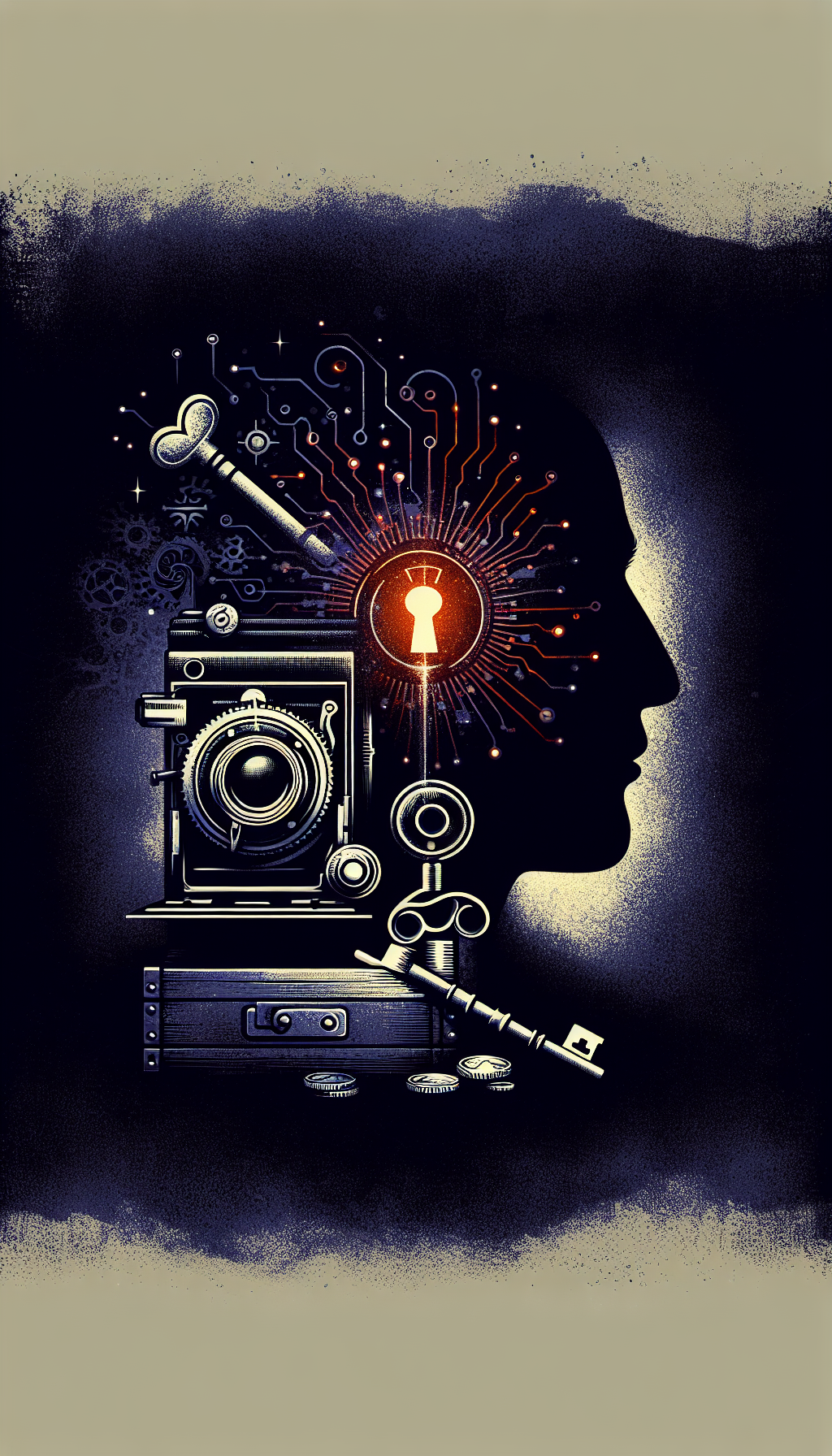In today’s digital age, identifying and valuing antiques has never been more accessible. Gone are the days when you needed to transport your treasures to an expert or pay hefty fees for professional appraisals. With the rise of free antique appraisal apps, anyone with a smartphone can now get instant insights into the history, authenticity, and potential value of their vintage items.
These innovative apps utilize artificial intelligence, vast databases, and sometimes even human experts to help collectors, dealers, and curious owners identify everything from furniture and jewelry to coins and collectibles. But with so many options available, which free antique appraisal apps actually deliver useful results?
In this comprehensive guide, we’ll explore the top free antique appraisal apps available for both Android and iOS devices, comparing their features, accuracy, and limitations to help you choose the right tool for your appraisal needs.
How Antique Appraisal Apps Work
Most free antique appraisal apps follow a similar workflow:
- Photo Capture: You take photos of your item from multiple angles
- AI Analysis: The app processes the images using computer vision technology
- Database Matching: Your item is compared against thousands or millions of cataloged antiques
- Results Delivery: You receive information about identification, age, history, and estimated value
The more advanced apps incorporate additional technologies:
Key App Technologies
- Artificial Intelligence: Computer vision algorithms trained on millions of antique images
- Augmented Reality: Tools that help you examine and measure physical characteristics
- Expert Networks: Access to professional appraisers or collector communities
- Price Databases: Historical sales data from auctions, marketplaces, and dealers
While no app can fully replace a professional in-person appraisal for high-value items, these digital tools offer a convenient starting point and can be surprisingly accurate for many common antiques and collectibles.
Top Free Antique Appraisal Apps for 2024
1. Curio - Antique Identifier (Android)
Curio stands out as one of the most comprehensive free antique identification apps available for Android users. With a remarkable 4.6-star rating from over 440 users, this app has established itself as a reliable tool for antique enthusiasts.
Key Features:
- Instant antique identification through photo analysis
- Extensive database covering various antique categories
- Historical context and background information
- Basic value estimation based on similar items
- User-friendly interface suitable for beginners
Curio uses a combination of AI algorithms and a vast database to identify antiques across multiple categories. While the free version has some limitations on the number of identifications, it provides an excellent starting point for casual collectors and those just beginning to explore the world of antiques.
2. RelicSnap - Antique Identifier (iOS)
For iPhone users, RelicSnap offers similar functionality with a polished iOS-specific design. Also boasting a 4.6-star rating, this app has been praised for its accuracy and user experience.
Key Features:
- Quick photo identification of antique items
- Value estimation through online comparison
- Provenance and historical information
- Clean, intuitive interface
- Regular database updates
RelicSnap excels at providing not just identification but also contextual information about your antiques, helping users understand the historical significance and potential value of their items. The app is particularly strong in identifying furniture, pottery, and decorative arts.
3. Antique Identifier: Antique ID (Android)
Another solid option for Android users is Antique Identifier: Antique ID, which focuses on a wider range of collectibles beyond traditional antiques. With a 3.7-star rating, it’s not as highly rated as some competitors but offers unique specializations.
Key Features:
- Identification of antiques, collectible coins, rare stamps, and banknotes
- Quick analysis with reasonable accuracy
- Regular content updates
- Simple, straightforward interface
- Offline capability for basic functions
This app is particularly useful for numismatists and philatelists, as it has specific capabilities for identifying coins and stamps that some general antique apps lack. However, its broader scope means it may not be as detailed for furniture and larger antiques.
4. Appraisals & Valuations (iOS)
For those focusing more on creating professional documentation, Appraisals & Valuations offers a different approach. Rather than just identification, this app helps users create appraisal documents for their items.
Key Features:
- Creation of PDF appraisal certificates
- Support for multiple categories (jewelry, antiques, art, etc.)
- Photo integration (up to 3 photos per item)
- Professional format suitable for insurance or resale
- No subscription required
With a strong 4.5-star rating, this app is ideal for users who already know what they have and need to document it properly. While not primarily focused on identification, it complements other apps well as part of a complete appraisal workflow.
5. JotForm Antique Appraisal App (iOS/Android/Web)
The JotForm Antique Appraisal App takes a different approach by focusing on creating comprehensive appraisal forms and inventory checklists. This free template-based solution is particularly useful for antique dealers, appraisers, and serious collectors.
Key Features:
- Customizable appraisal forms
- Inventory management
- Works on any device (iOS, Android, desktop)
- Offline capabilities
- Export options for documentation
Unlike apps that focus on AI identification, JotForm provides professional templates that help structure the appraisal process. This makes it an excellent companion to identification apps, allowing users to document their findings systematically.
Using Google Lens as a Free Alternative
For those who prefer not to download specialized apps, Google Lens offers a surprisingly effective alternative for initial antique identification. Available on both Android and iOS devices (through the Google app), this universal tool can identify many antiques and collectibles with reasonable accuracy.
How to use Google Lens for antique identification:
- Open Google Lens (built into most Android cameras) or the Google app
- Point your camera at the antique or upload an existing photo
- Wait for results that show similar items online
- Look specifically for museum entries, auction listings, or collector websites
- Use the “Search” option to refine results with additional terms like “antique” or “vintage”
Google Lens works especially well for items with distinctive visual characteristics, such as ceramic patterns, silver hallmarks, or furniture with unique design elements. It can quickly connect you to relevant eBay listings, auction results, and collector forums where similar items have been discussed.
The main advantage of Google Lens is its vast database drawn from the entire internet, which sometimes exceeds the specialized databases of dedicated antique apps. However, it lacks the specific antique expertise and value analysis of purpose-built appraisal apps.

Features to Look for in Antique Appraisal Apps
Antique App Feature Checklist
Consider these key features when choosing an appraisal app
- Accurate identification capabilities across multiple antique categories
- Value estimation based on current market data
- Historical information and provenance details
- High-quality image processing for detailed visual analysis
- User-friendly interface and easy navigation
- Expert consultation options (even if limited in free versions)
- Documentation and reporting capabilities
- Regular database updates with new items and market values
Identification Accuracy
The primary function of any antique appraisal app is accurate identification. Look for apps that:
- Support multiple categories of antiques (furniture, pottery, jewelry, etc.)
- Recognize maker’s marks, signatures, and other identifying details
- Provide specific information rather than generic results
- Allow multiple photo angles for better analysis
- Show confidence levels in their identifications
Value Estimation Methods
Different apps use various approaches to estimate values:
- Auction Result Comparison: Apps that reference recent auction sales
- Marketplace Analysis: Tools that aggregate current listing prices on platforms like eBay
- Condition Adjustment: Apps that factor in condition when estimating value
- Regional Value Consideration: More sophisticated apps that adjust for regional market differences
Documentation Features
For collectors and insurance purposes, documentation capabilities matter:
- PDF generation for appraisal reports
- Photo storage and organization
- Inventory management
- Export options for backup or sharing
- Printable certificates or forms
Free vs. Premium App Features
What you get in free versions compared to paid upgrades
</tbody>
</table>
Limitations of Free Antique Appraisal Apps
While free antique appraisal apps offer incredible convenience, they come with important limitations that users should recognize:
Accuracy Constraints
No AI system can match the expertise of a seasoned appraiser with decades of experience. Common accuracy issues include:
- Difficulty with unmarked or rare items
- Challenges distinguishing reproductions from originals
- Limited ability to assess condition nuances
- Confusion with regional variations or custom pieces
Value Estimation Challenges
Value estimates from free apps should be considered rough guidelines rather than definitive appraisals:
- Market values fluctuate constantly
- Condition affects value dramatically but is hard to assess via photos
- Regional market differences may not be captured
- Provenance and history often add value that algorithms cannot assess
Technical Limitations
The technology itself has inherent constraints:
- Photo quality heavily impacts results
- Lighting conditions can affect identification
- Some details require specialized equipment to properly examine
- Network connectivity issues can limit functionality

Evolution of Antique Appraisal Technology
- Pre-2010
Traditional Appraisals
Professional appraisers and reference books were the only reliable sources for antique identification and valuation. - 2010-2015
Early Digital Catalogs
First generation of digital price guides and online databases emerged, requiring manual search and comparison. - 2015-2020
First Visual Recognition Apps
Basic image recognition technology began being applied to antiques, with limited accuracy but growing databases. - 2020-Present
AI-Powered Appraisal Apps
Advanced machine learning algorithms now provide increasingly accurate identification and value estimates through smartphone apps. - Future
Augmented Reality Appraisal
Emerging technology combining AR, AI, and expert networks will provide comprehensive on-the-spot analysis with near-professional accuracy.
When to Seek Professional Appraisal Services
While free antique appraisal apps can provide valuable initial insights, there are several scenarios where professional appraisal services become necessary:
High-Value Items
For items potentially worth over $1,000, the investment in professional appraisal is usually justified:
- Rare antique furniture pieces
- Fine art and paintings
- High-quality jewelry, especially with precious stones
- Historically significant items
- Collections with potential substantial value
Legal and Insurance Requirements
Many situations require formal documentation from certified appraisers:
- Insurance coverage and claims
- Estate settlements and probate
- Tax purposes, including donations
- Divorce asset division
- Business inventory valuation
Authentication Concerns
When authenticity is crucial or in doubt:
- Items with questioned provenance
- Potentially rare or museum-quality pieces
- Antiques with restoration or modification
- Pieces from frequently counterfeited categories
Finding Professional Appraisers
When you need to move beyond app-based appraisals, consider these resources:
- International Society of Appraisers
- American Society of Appraisers
- Appraisers Association of America
- Heritage Auctions Free Appraisal Service
- Local auction houses and reputable antique dealers
Many professional appraisers now offer virtual consultations, providing a middle ground between app-based and in-person appraisals.
Tips for Getting the Most Accurate App Results
The quality of results from antique appraisal apps depends significantly on how you use them. Follow these tips to maximize accuracy:
Photography Best Practices
- Use natural, diffused lighting - Avoid harsh shadows and glare
- Capture multiple angles - Include front, back, bottom, and close-ups of details
- Photograph any marks or signatures - Maker’s marks are crucial for identification
- Include a size reference - Place a ruler or common object for scale
- Clean the item - Remove dust and debris that might obscure details
- Use a neutral background - A plain white or black background improves AI recognition
- Maintain sharp focus - Blurry images drastically reduce identification accuracy
App Usage Tips
- Provide detailed descriptions - Many apps allow text input to supplement photos
- Try multiple apps - Different apps have different strengths and databases
- Use specific category filters - Narrow the search field when possible
- Check for database updates - Ensure your app is running the latest version
- Review all suggested matches - Don’t just accept the first result
- Join community features - Some apps have forums where experts may offer insights
- Save and organize results - Document findings for future reference
Verification Strategies
To increase confidence in app-based appraisals:
- Cross-reference multiple sources - Compare results across different apps
- Research suggested identifications - Use auction archives and collector forums to verify
- Join online collector communities - Places like Reddit’s r/Antiques can provide feedback
- Check completed sales on eBay - Look for similar items that have actually sold
- Consult reference books - Traditional guides remain valuable resources
Common Questions About Free Antique Appraisal Apps
What is the free app that identifies antiques by picture?
Several free apps can identify antiques using photos, with Google Lens being the most universally available option. For dedicated antique identification, Curio (Android) and RelicSnap (iOS) are popular free options that specifically focus on antiques rather than general object recognition. These apps use AI technology to analyze your photos and match them against databases of known antiques.
How do I find the value of antiques for free?
To find the value of antiques without spending money, you can:
- Use free antique appraisal apps like Curio, RelicSnap, or Google Lens
- Search completed listings on eBay for similar items
- Visit auction house websites (like Sotheby’s and Christie’s) that offer free valuation days
- Participate in online forums like Reddit’s r/Antiques or specialized collector groups
- Use price guide websites that offer limited free searches
- Check with local antique shops that may provide informal assessments
For valuable items, free resources should be considered starting points rather than definitive appraisals.
Is there a free appraisal app that works well for beginners?
Yes, JotForm's Antique Appraisal App is particularly suited for beginners as it provides structured templates that guide you through the appraisal process step by step. Google Lens is also beginner-friendly due to its simple interface and integration with web search results. For those new to antiques, apps with educational components like Curio are helpful as they provide historical context and learning materials alongside identification features.
Are free antique appraisal apps accurate?
Free antique appraisal apps offer reasonable accuracy for common items and initial identification, but they have significant limitations:
- Accuracy typically ranges from 60-80% for common items
- Rare or unusual pieces are often misidentified
- Condition assessment via photos is limited
- Distinguishing between originals and reproductions can be challenging
- Value estimates should be considered rough guidelines only
These apps work best as first-step tools before seeking professional opinions for valuable or important pieces.
What are the best free appraisal apps for specific types of antiques?
Different apps specialize in various antique categories:
- Coins and Currency: Antique Identifier: Antique ID excels with numismatic items
- Furniture: RelicSnap offers good recognition of furniture styles and periods
- Pottery and Porcelain: Curio has an extensive database of maker’s marks
- Jewelry: Google Lens works surprisingly well for identifying jewelry hallmarks
- Books and Documents: No free app is particularly strong in this area; expert consultation is recommended
- Art and Paintings: Most free apps struggle with art authentication; use only for initial research
For best results, try multiple specialized apps rather than relying on a single general-purpose tool.
How do free antique appraisal apps compare to paid versions?
Free antique appraisal apps typically offer:
- Limited number of identifications per month
- Basic database access
- Simple value estimates
- AI-only analysis without human expert review
- Basic report generation (often watermarked)
Paid versions generally provide:
- Unlimited identifications
- Access to expanded databases including rare items
- More detailed value analysis with market trends
- Expert consultation options
- Professional documentation suitable for insurance
The value of upgrading depends on your needs—casual users may find free versions sufficient, while dealers and serious collectors often benefit from premium features.
Can I use a free antique appraisal app for insurance purposes?
Most insurance companies will not accept appraisals generated solely by free apps for valuable items. For insurance documentation, you typically need:
- A formal appraisal from a certified appraiser for items over a certain value (often $1,000+)
- Documentation that includes detailed condition reports
- Professional authentication for rare or valuable pieces
However, free apps can help you identify which items in your collection merit professional appraisal for insurance purposes, and some apps like Appraisals & Valuations can help generate preliminary documentation that you can later supplement with professional assessment.
Are there any free online alternatives to mobile appraisal apps?
Yes, several online resources offer free antique identification and valuation services:
- Heritage Auctions’ Free Appraisal Service - Upload photos for expert review
- Antique forum websites - Post images for community feedback
- WorthPoint Free Trial - Limited free access to their extensive price database
- LiveAuctioneers Archive - Search past auction results
- Museum collection databases - Compare your items to authenticated examples
These online resources often provide more detailed information than mobile apps but may require more time and effort to use effectively.
Conclusion: The Future of Antique Appraisal Technology
Free antique appraisal apps represent a revolutionary step in democratizing access to expertise that was once limited to professionals and serious collectors. These tools have made it possible for anyone to begin exploring the stories, history, and value behind their antique possessions.
The current generation of apps, while impressive, represents just the beginning of this technological evolution. As artificial intelligence continues to advance, we can expect future improvements:
- Greater accuracy in distinguishing reproductions from originals
- Better condition assessment capabilities
- More precise value estimations based on expanding data sets
- Integration with augmented reality for more immersive examination
- Hybrid approaches combining AI with human expert networks
Despite these advances, the most effective approach to antique appraisal will likely remain a balanced one:
- Start with free apps for initial identification and basic information
- Research further using online resources and reference materials
- Consult communities of collectors and enthusiasts for feedback
- Seek professional appraisals for valuable, rare, or important pieces
This layered approach provides both the convenience and accessibility of digital tools and the depth of knowledge that only human expertise can provide.
Whether you’re a curious novice who discovered an interesting piece at a garage sale, a budding collector building knowledge, or an experienced dealer needing quick reference tools, free antique appraisal apps offer valuable assistance in your journey to understand and appreciate the treasures of the past.
External Resources for Antique Identification and Valuation
Curio - Antique Identifier
A comprehensive Android app for identifying and valuing antiques using AI technology and extensive databases. Features instant antique ID and historical context.
RelicSnap - Antique Identifier
iOS application that helps users identify antiques, discover their history, and estimate value through comparison with similar pieces online.
Heritage Auctions Free Appraisals
Professional online appraisal service where experts authenticate and provide value estimates for collectibles through photo submission.
Antique Appraisal Software Template
Customizable mobile form system for antique dealers and appraisers, featuring inventory checklists and appraisal documentation tools.
Reddit Antiques Community
Active forum where collectors and experts help identify and value antiques through photo submissions and discussion.
Consumer Reports: How to Value Your Stuff
Comprehensive guide to antique appraisals, including how to find qualified appraisers and free valuation resources.
Appraisals & Valuations App
iOS app for creating professional appraisal and valuation PDF certificates for jewelry, antiques, art, and other collectibles.
International Society of Appraisers
Professional organization providing search tools to find qualified appraisers and resources for antique valuation standards.
Get a Professional Appraisal
Unsure about your item’s value? Our certified experts provide fast, written appraisals you can trust.
- Expert report with photos and comps
- Fast turnaround
- Fixed, upfront pricing
No obligation. Secure upload.
| Category | Price | Notes |
|---|---|---|
| Photo Identification | Limited quantity (5-10/month) | Unlimited identifications |
| Database Access | Basic database only | Expanded database with rare items |
| Value Estimates | Basic range estimates | Detailed valuation with market analysis |
| Expert Consultation | AI-only analysis | Human expert review available |
| Documentation | Simple reports with watermarks | Professional appraisal documents |




